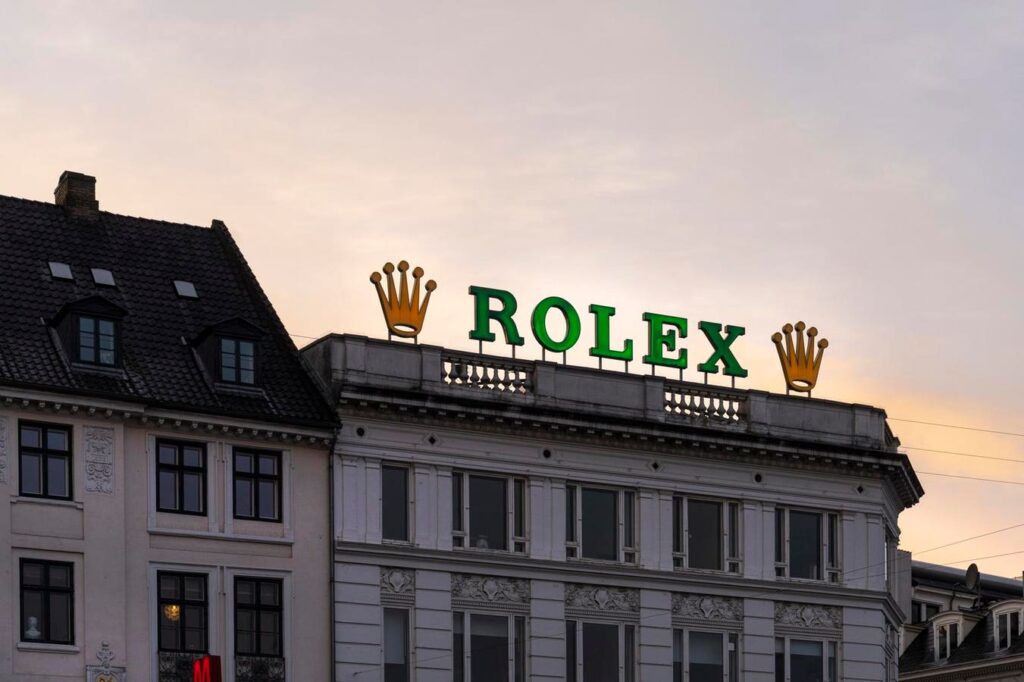In the age of digital everything, the Rolex brand of mechanical watches keeps on ticking. What’s the secret to its success?
A 2020 episode of the PBS television series “Antiques Roadshow” featured an Air Force veteran learning that the Rolex watch he’d bought nearly 50 years earlier for $345.95 was a rare model, estimated to be worth as much as $700,000. The shocked veteran playfully pretended to faint and a video of the segment went viral, collecting 16 million views to date.
The watch in question was made in 1971, an Oyster model descended from the world’s first waterproof wristwatch, invented by Rolex in 1926. The price the veteran paid is cheap by today’s standards, but at the time about equal to a month’s salary. The watch was in perfect condition, barely worn.
What made it especially valuable was that Paul Newman, a Hollywood megastar, had prominently worn that model Rolex in the 1969 hit “Winning,” a film about the high-stakes world of car racing where seconds count.
More than 50 years later—to millions of watch dealers, collectors, and enthusiasts—the model is today known as the “Paul Newman Rolex Daytona.” (The actual watch, the one Newman owned and wore in the film, sold in 2017 for nearly $18 million.)
In the history of modern retailing, there are few luxury brands that have survived a century or more and retained their cache—think Chanel, Gucci, Louis Vuitton, Cartier. None have the clout that Rolex has in its category.
Luxury watches have long been a status purchase, but about a decade ago—around the time that China was beginning to boom and minting a generation of new wealth—prices of vintage models began to shoot up and the market for new watches exploded.
Expensive brand-name watches in general became a pseudo-investment category, much like gold. Examples like the one that showed up in Fargo, North Dakota on Antiques Road Show fueled frenzied trading in vintage models, flipping of new models, and rampant counterfeiting.
What makes the Rolex story unique is that a brand known for exquisitely designed and manufactured mechanical watches is, in the digital age, more popular than ever.
According to Morgan Stanley, which puts out an annual report prepared by LuxeConsult, Rolex sells about twice as many watches as its nearest competitor, Cartier. According to the report for 2024, Rolex represented a third of the entire Swiss watch industry, and nearly 45% of the market for pre-owned watches.
So, what’s the secret to the Rolex juggernaut?
For starters, since 1960, the company has been owned by the Hans Wilsdorf Foundation, a private family trust named for the brand’s co-founder. Unlike many luxury brands, it has been insulated from the vagaries of the stock market and activist shareholders. It isn’t an asset in the portfolio of a large holding company. In fact, Rolex is a nonprofit, which reports that it donates its profits to various charities involved in the arts as well as social and environmental issues.
The most important factor was the decision the company made in the 1960s to position its product as an “exceptional watch for special people,” according to Pierre-Yves Donzé, author of a book about the company’s history. In an interview published by Bloomberg last year, Donzé said the Swiss watch industry at the time was still marketing itself on the basis of Swiss craftsmanship and quality.
“The idea came from Americans and the advertising company J. Walter Thompson,” he said. “This made Rolex a symbol of social achievement, of individual success and so on.”
Thus, Paul Newman came to prominently wear a Rolex Oyster in a blockbuster movie, and thousands of celebrities since have been similarly seen, photographed and filmed wearing the latest $50,000-and-up model.
The company has more recently taken steps to further insulate itself from the vagaries of the market. In 2023, Rolex bought Bucherer, one of the world’s largest watch retailers.
To deal with the proliferation of counterfeits, last year the company began a program to sell “certified pre-owned” watches. It was seen as a radical but brilliant move, protecting the brand by giving customers the security of knowing the watch they’re buying is definitely a Rolex, and that it has been refurbished by Rolex.
Like millions of other aspiring young executives, I treasure the moment early in my career when I bought my first Rolex. The metal strap was so well designed that at times I hardly knew I had it on, it fit so well. Wearing it gave me an extra measure of confidence and it was a beautiful piece of jewelry.
As an example of how to build and manage a brand, the Rolex story continues to inspire and inform.
Read the full article here


